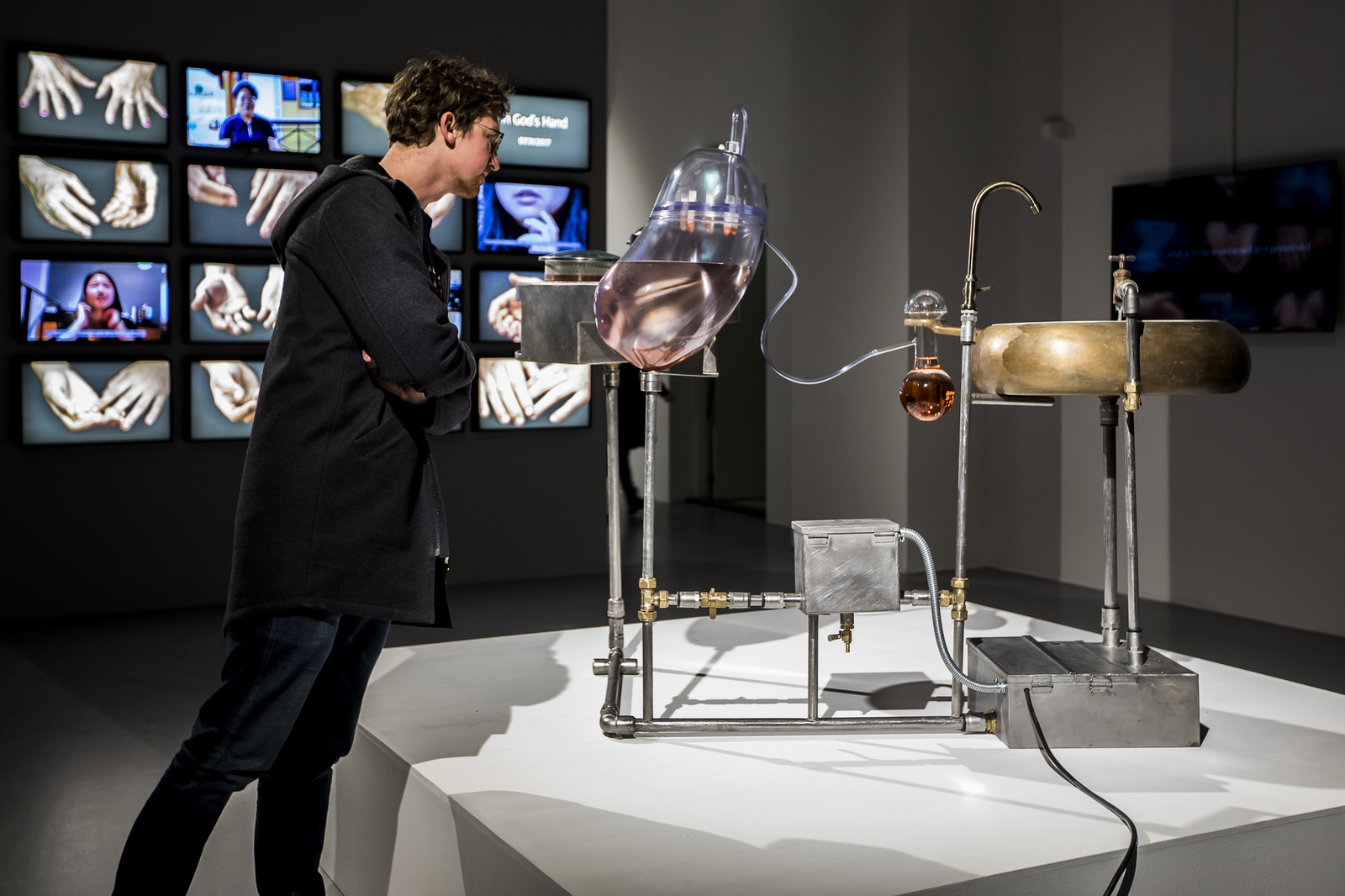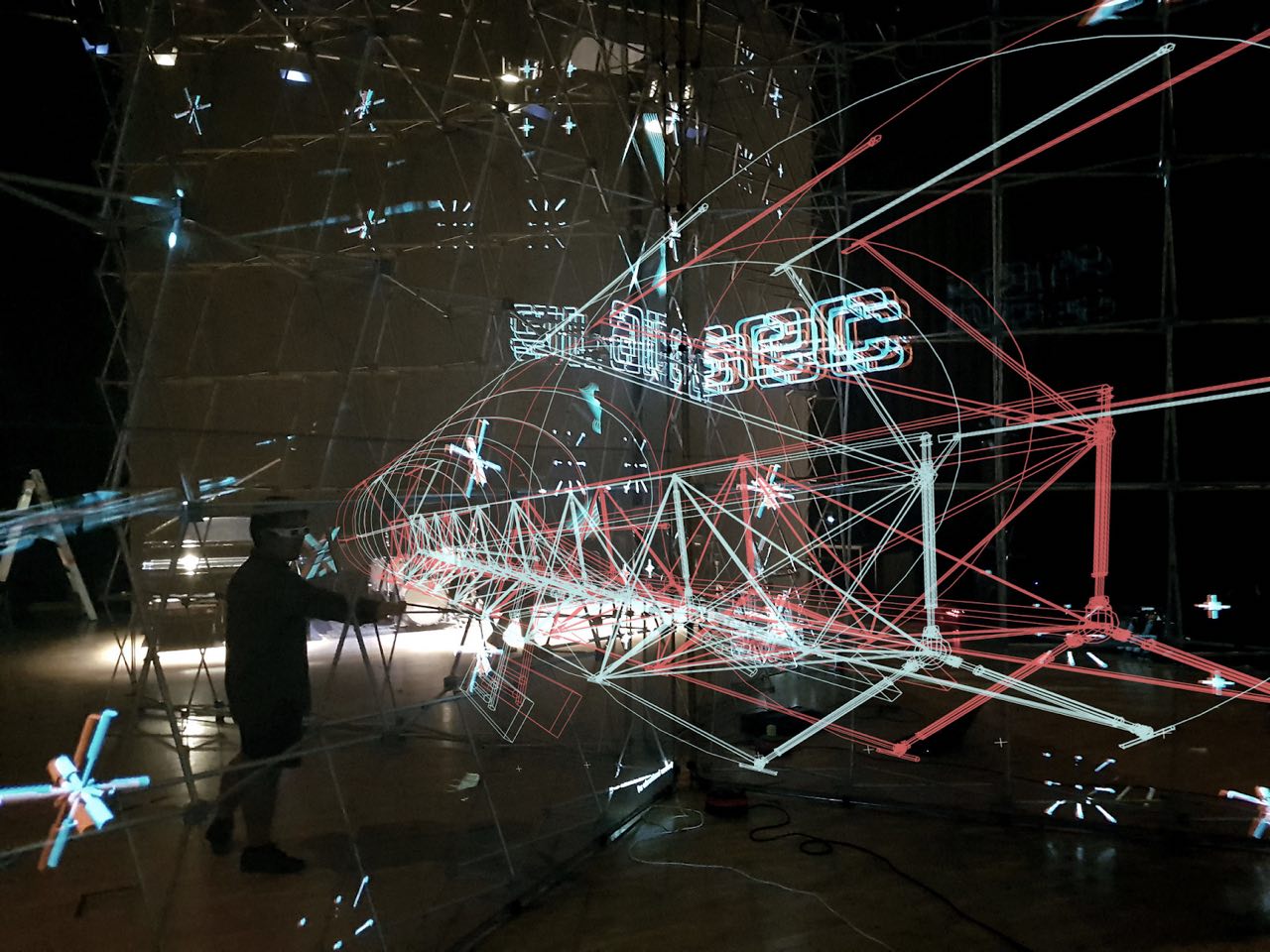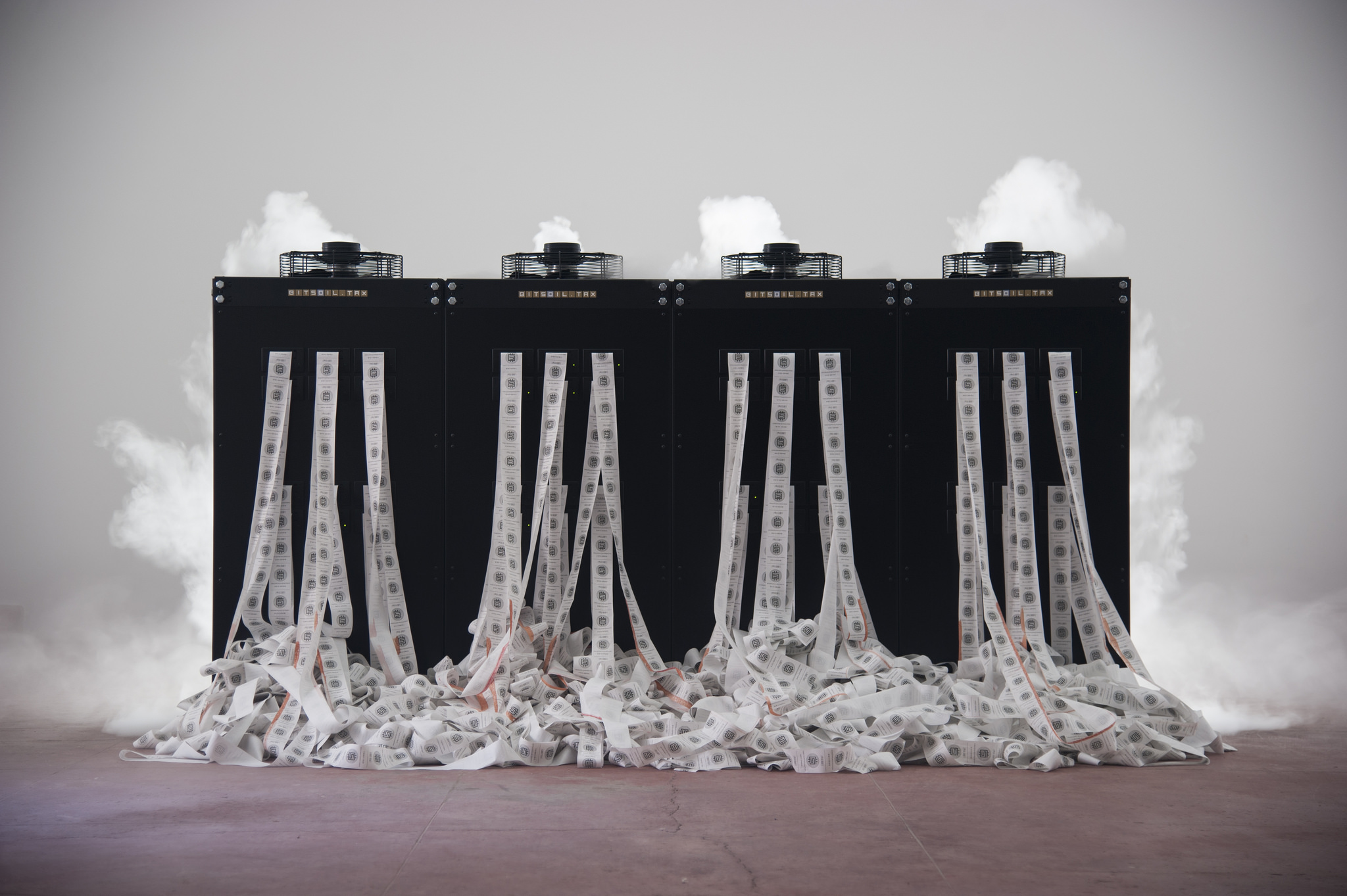ObOrO
Japan’s Ryo Kishi designed ObOro, an installation wherein unstable fluctuations are created in levitating globes. Whilst the whimsical display might appear magical, the globes are actually suspended using air from blowers. As a result, they are constantly vibrating and rotating – actions which playfully highlight their precariousness and fragility.

Mother’s Hand Taste (Son-Mat)
Mother’s Hand Taste was conceptualized by Korean artist Jiwon Woo. It explores the relationship between the intangible aspects of identity – cultural heritage, microbiology, immigration and the transient self. Not for the faint of heart, the project involved the biofabrication of the hand yeast of multi-generational family members from around the globe.
The impact of this hand yeast was investigated artistically and scientifically in an effort to reflect critically on the origins, authenticity and preservation of the less tangible concept of cultural heritage, as well as the impact on the taste of fermented food.

LightTank
LightTank is an installation comprised of holographic line drawings that effectively blur the boundaries between the tactile and the virtual. The immersive experience, created by New Zealand duo Uwe Rieger and Yinan Liu, explores Reactive Architecture in real time in an effort to fuse physical materiality and digital information.

BitSoil Popup Tax & Hack Campaign
This quirky installation is made up of a troop of bots that comb through Twitter searching for particular keywords: affluence, Apple, assets, benefits, common, data, data economy, cash and cost. When these words are located, the user is asked to complete a task and to join the Hack Campaign. These activities range from emailing CEOs of top tech companies to merely obtaining information about the project, but they all create new data – known as BitSoil.

πTon
Swiss Collective Cod.Act are responsible for the captivating and grotesque movements of the πTon sound installation. The creature is comprised of a loop made from a long rubber tube and is animated through contortions and undulations. The work turns the group of four human beings (each equipped with sound halberds) into shepherds responsible for its efforts and sufferings. Its dance couples organic movement with synthesized voices and sounds and is designed to remind the viewers of their more primitive behaviours.

SEER: Simulative Emotional Expression Robot
SEER’s Japanese developer Takayuki Todo hopes to portray a sense of conscious human emotion through the robot to highlight that human-like communications may be able to be taught and mimicked. This ultimately raises philosophical and practical questions about the future of our ability to distinguish robots from humans.

Tycho; Test One / Paul Friedlander (UK)
Paul Friedlander is a British scientist and artist who creates whimsical kinetic light sculptures. His installation ‘Tycho; Test One’ is a dedication to Tycho Brahe, one of the last astronomers who worked before the invention of a telescope. Friedlander’s inspiration was Tycho’s observatory that contained a great globe with numerous quadrants and astrolabes. The author also finds the work reminiscent of the monolith in ‘2001: A Space Odyssey’, which, according to the story, was concealed under dust in the floor of the crater Tycho.

Try Not To Think So Much
Eugenio Ampudia’s ‘Try Not To Think So Much’ alludes to the communicational noise we inhabit. The sound installation is a composed amplifier that transforms the records of art conferences and lectures into a synthesized sound.

Phosphere
Phosphere uses a motion capture camera to process movements within the installation’s space. It is possible to trace the movements of those in the installation and for these to then be played back in 3D. The end result is a groundbreaking interplay between dance and video wherein the elements are reduced to light and the human movement is transcendently ephemeral.








